Looking for a preschool that’s best for your child?
What’s best for your child depends on several factors, such as the teaching approach that fits your child’s learning style, whether the preschool’s values are aligned with your parenting values and the sincerity of the preschool’s staff to develop positive relationships with you and your child.
From Montessori, nature-based to even mindfulness-focused preschool curriculums available, parents in Singapore are spoilt for choice.
We summarise the top things you need to know about 15 types of teaching methods and a sample of preschool listings for you to pick from.
1. Play-based
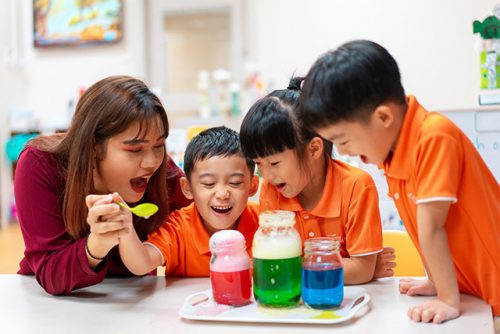 Image: NTUC My First Skool
Image: NTUC My First Skool
Play-based preschools like NTUC My First Skool integrate play into a quality and holistic curriculum. Its PETAL pedagogical approach – Playing, Exploring, Thinking and Applying Learning, includes development across the six learning domains (Language and Literacy, Numeracy, Discovery of the World, Motor Skills Development, Aesthetics & Creative Expression, and Social & Emotional Development). Niche programmes such as STEM, Nature Learning and Arts are also offered at selected centres to give children additional exposure.
Examples: NTUC My First Skool, Shaws Preschool
2. HighScope
The central belief of HighScope is that children construct their own learning by doing, and also being actively involved in working with materials, people and ideas. This method identifies and builds on children’s strengths, interests and abilities. Children are placed in the role of active learners while teachers support and guide.
In preschools such as the British Council Preschool that employ this method, role play and speech and drama lessons are part of the curriculum. As a result, children emerge as confident speakers and are also not afraid to ask questions.
Example: British Council Preschool
3. Multiple Intelligences
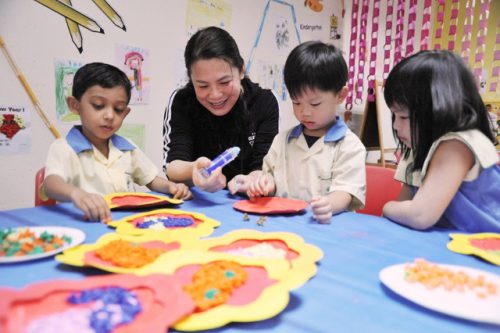 Image: Carpe Diem Starlets Sparkle
Image: Carpe Diem Starlets Sparkle
The theory of Multiple Intelligences, proposed by Harvard University Professor, Howard Gardner, identified eight types of intelligence that every individual has the capacity to possess. This allowed educators to identify various strengths and weaknesses in children and challenged the idea of measuring intelligence using IQ.
Eight types of intelligence:
- Visual/Spatial
- Verbal/Linguistic
- Logical/Mathematical
- Bodily/Kinaesthetic
- Musical
- Interpersonal
- Intrapersonal
- Naturalist
Preschools that develop their curriculum along with this theory consciously set up different learning experiences to enable children to explore, develop their eight intelligences and find their niches to excel.
Examples: ChildFirst, Carpe Diem Starlets Sparkle, Preschool for Multiple Intelligences
4. Mandarin-based
Mandarin-based programmes expose children to Mandarin vocabulary and traditional Chinese cultures such as traditional Chinese calligraphy and poetry, to help them gain a greater appreciation for the Chinese language and culture.
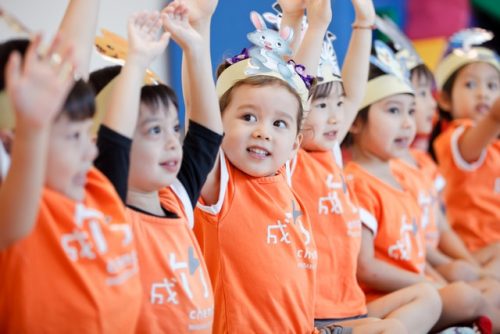 Image: Chengzhu Mandarin Kindergarten
Image: Chengzhu Mandarin Kindergarten
Some preschools deliberately place more emphasis on Mandarin such as Little Green House Chinese Preschool @ Sin Ming where in the Playgroup and Nursery years, up to 80% of classes are conducted in Chinese with increasing weightage on English towards the Kindergarten years to better prepare them for Primary School.
Examples: Chengzhu Mandarin Kindergarten, MindChamps Chinese Preschool, Mulberry Learning Chinese Preschool, Little Green House Chinese Preschool @ Sin Ming
5. Mindfulness Approach
Mindfulness has been proven to increase wellbeing, anchor attention and reduce stress. Preschools that practise the mindfulness approach believe that this approach to paying attention improves all areas of children’s lives by strengthening their emotional balance. Children are taught to be mindful in listening, seeing, feeling and communicating with others.
As a result, children will feel at ease, connected to others and the world, and empowered to be themselves. This also nourishes children’s capacity for kindness, caring and empathy for others.
One preschool that teaches mindfulness is Julia Gabriel Preschool (formerly Chiltern House Preschool). Children learn how to self-regulate difficult emotions such as anger and fear through breathing techniques, to remain calm. This preschool starts mindfulness as early as Pre- Nursery to increase their self-awareness, social-awareness and self-confidence by tuning into their internal and external experiences.
Example: Julia Gabriel Preschool
6. Lifelong learning method
To prepare children for the future, preschools such as PCF Sparkletots aim to cultivate lifelong learning skills and build resilience. Its curriculum covers six learning domains to ensure the holistic development of every child:
- Aesthetics and Creative Expression
- Discovery of the World
- Language and Literacy
- Motor Skills Development
- Numeracy
- Social and Emotional Development
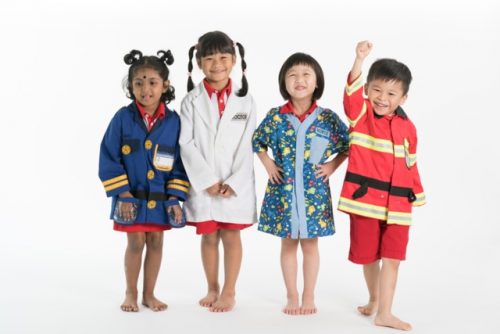 Image: PCF Sparkletots
Image: PCF Sparkletots
PCF Sparkletots activities are integrated with interdisciplinary learning such as outdoor learning, tech toys and intergenerational programmes. Children are encouraged to develop strong moral values, build self-management skills, and nurture essential life skills.
Similarly, Primus Schoolhouse by Invictus provides a stimulating and ordered learning environment with the facilities and ethos to instruct, encourage and inspire children to discover and develop their own talents and to become life-long learners.
It places a strong emphasis on rigour in academic achievement, while cultivating children’s interests in music, art, drama, digital technologies and sports. Its philosophy values character development as paramount, including high personal standards and the cultivation of good manners.
With preschool years as the foundation, Primus Schoolhouse by Invictus aims to empower children for future success throughout their years at school and beyond.
Examples: Little Footprints Preschool, PCF Sparkletots, Primus Schoolhouse by Invictus
7. Enquiry-Based Learning Approach
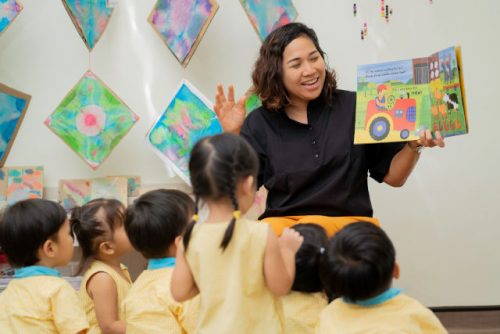 Image: The Little Skool-House
Image: The Little Skool-House
Enquiry-Based Learning harness the curiosity of the children to encourage enthusiasm for learning. This approach shifts the focus to the children, who takes charge of the learning by becoming active learners as they choose which topics to explore. The teacher act as a guide to the kids who encourages their exploration and helps them develop their academic and social skills from their topic of interest. This method develops critical thinking skills and also a love of learning.
For instance, The Little Skool-House is a pre-school which unlocks the children’s natural curiosity to learn. Questions come up from the children’s curiosity and with the guidance from the class teacher, they will embark on a Builders and Innovation project where they will discuss, investigate, research and share their findings with the class. This sharpens the children’s literacy, critical thinking and problem-solving skills which aids them in their future learning.
Example: KiddiWinkie Schoolhouse, The Little Skool House
8. Inquiry-Based Learning Approach
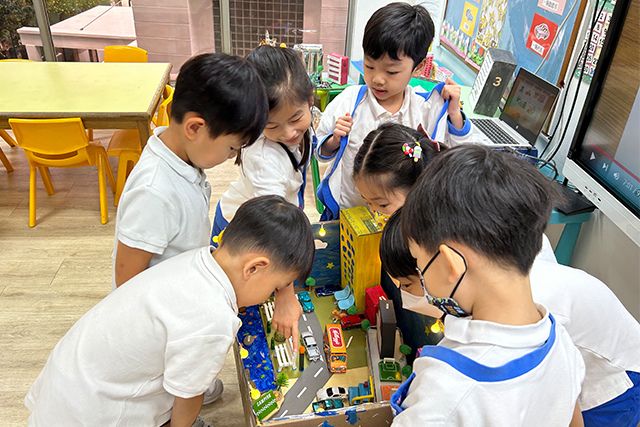 Image: BRMC Little Lights Preschool Barker
Image: BRMC Little Lights Preschool Barker
The Inquiry-based approach of learning emphasizes the development of research skills, critical thinking, communication, social skills, self-management, and reflection. By engaging in inquiry learning, children develop a deeper understanding of concepts through formulating questions and making connections, develop essential skills such as conducting research, analysing information and drawing conclusions. They become active, responsible participants in their own education, which help them become independent thinkers and lifelong learners.
Example: BRMC Little Lights Preschool Barker, BRMC Little Lights Preschool Vanda
9. STEM-Based Curriculum
 Image: Methodist Preschool
Image: Methodist Preschool
Preschools such as Methodist Preschool adopt a STEM-based (Science, Technology, Engineering and Mathematics) curriculum, an educational discipline that aims to spark an interest and lifelong love of sciences for students to develop a strong foundation on the competencies needed to prepare them for future-readiness.
STEM activities are open-ended, with more than one right answer and children are encouraged to explore, observe, question, investigate, analyse, and evaluate within the STEM-based curriculum framework. STEM disciplines inculcate critical, inventive and analytical thinking, fostering creativity, innovativeness, and problem-solving skills and also building healthy attributes like perseverance and resilience in learners as they face challenges and strive to produce innovative solutions.
STEM learning processes of observing, describing, comparing, and experimenting are introduced to students along with basic engineering processes of designing and building to solve problems. Immersive hands-on lessons conducted indoors and outdoors inspire exploration, innovation and develop attributes of entrepreneurship in preparing preschoolers for future readiness.
Example: Methodist Preschool
10. Whole Brain Learning
Preschools that advocate the Whole Brain Learning method aim to activate all aspects of the young mind – Sensory, Motor, Intellectual, Linguistic, Emotional and Social – to develop children holistically.
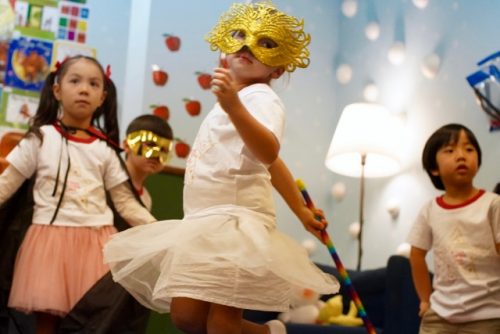 Image: MindChamps Performing Arts PreSchool
Image: MindChamps Performing Arts PreSchool
For example, MindChamps Performing Arts PreSchool has a renowned holistic curriculum with key learning outcomes rooted in the four pillars of the performing arts – dance, drama, music and singing, designed to help children aged 18 months to 6 years develop literacy, numeracy and socio-emotional skills.
Examples: MindChamps Performing Arts Preschool, Kinderland
11. Nature-based
Nature-based preschools such as Roots and Boots believe that early experiences in the natural environment have a positive impact on children’s development and well-being.
It uses the outdoors and green spaces to allow learning in an urban green setting or a “preschool” without walls. With a fully-outdoor early childhood education experience, outdoor learning activities are aimed at developing children’s problem solving, cooperation skills, and confidence.
Roots and Boots’ teachers, who are called urban forest school guides, are facilitators of children’s learning, to build life skills via experiential learning.
Examples: Roots and Boots
12. Art-based
An art-based curriculum allows children to expand their artistic abilities beyond the basic level and be more imaginative in their future art encounters. Having an art-based education builds children’s capabilities in languages, technology and various arts such as visual, drama, music and movement.
For example, Da Little Arts enables children to explore and expand their artistic abilities beyond the basic level using appropriate drawing techniques in a class by combining shapes and lines to form their pictures from symbolic to representation form. This art-based preschool teaches other art techniques like constructing textured collages, pantomime characters from stories and songs and constructing simple hand-held props or costumes for their stage play.
Examples: Arts Kidz International, Da Little Preschool
13. Montessori
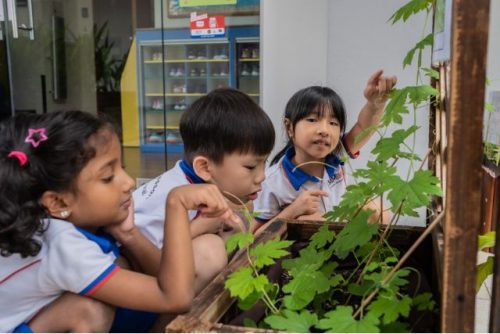 Image: Modern Montessori International Preschool
Image: Modern Montessori International Preschool
Montessori education is inquiry-based and child-centred learning that fosters self-help and instils independence in your child. The Montessori philosophy is based on the premise that all children want to learn and should develop at their own pace.
Children are guided by Montessori teachers who facilitate, demonstrate and model learning activities to enable children to learn in their own way. Components of the Montessori method include Practical Life, Sensorial, Language, Mathematics, Cultural Studies as well as Thematic-based Teaching to help children achieve their fullest potential and experience the joy in learning.
Examples: Modern Montessori International Preschool, Superland Preschool, BRMC Little Lights Preschool Vanda
14. Reggio Emilia
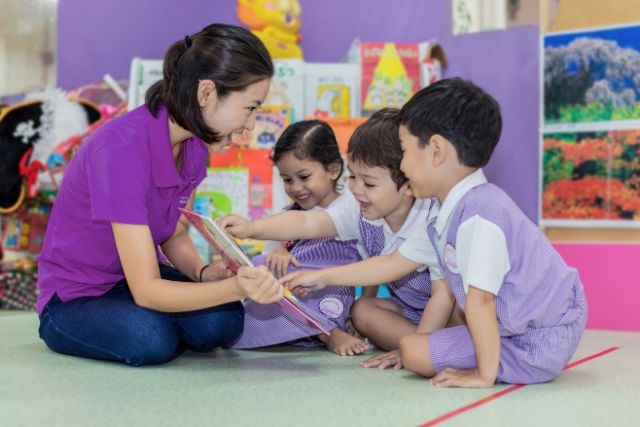 Image: Mulberry Learning
Image: Mulberry Learning
The Reggio Emilia approach views children as individuals who are curious about their world, with the potential to learn from their surroundings via interaction. Children are exposed to a wide variety of educational opportunities that encourage self-expression, communication, logical thinking, and problem-solving.
According to EtonHouse, the most common principle that defines the Reggio Emilia approach is that children have many languages. It believes that children have infinite ways to express themselves, explore and connect these thoughts to their imaginations and build connections to the world around them. Hence, its preschool environment is set up with resources and materials for children to connect to the hundred languages.
As children are active participants in their own learning and are able to use these materials to translate their way of thinking of the world around them, EtonHouse follows an interest-based approach where it honours children’s thinking and the community they are immersed in.
Examples: Mulberry Learning, Etonhouse Preschool
15. Waldorf Steiner
In Waldorf-Steiner schools, the education of the child involves his/her whole being, such as the heart, the hands, and the head. Children are encouraged to develop clarity of thought, sensitivity in their feelings and strength of their will. The aim is to enable children to become free, morally responsible individuals with a high degree of social competency.
Children are taught through imitation and example as educational approaches. For example, numeracy is learnt through practical domestic work like cooking and bread making, while literacy skills are nurtured through daily storytelling, singing and recitation of poetry and verses.
For motor skills, painting, drawing and beeswax modelling enhance the children’s sense of balance and symmetry while craft activities support the development of fine motor skills. Parent participation is expected to be active and children have limited exposure to TV, social media, computer or video games.
Example: Waldorf Steiner Education Association
16. Bilingual
As children can pick up languages much more easily when they are young, having a bilingual education allows children to get a head start in being able to understand and blend in with a different culture.
Some preschools like Mulberry Learning go one step further by having a special International Friendship Programme where Singapore children can interact with fellow pre-schoolers from partner schools in Beijing and Shenzhen via video-conferencing. This allows children to practise the Chinese language, discuss their project findings and learn more about cultural nuances with their Chinese peers.
Examples: Singapore Hokkien Huay Kuan Preschool, Little Sage Preschool, MapleBear Preschool Singapore, Raffles Kidz International, Little Green House, Mulberry Learning, ELFA Chinese Preschool
With a wide array of preschool methods to choose from, consider what outcomes you hope to observe in your child as he/she grows and develops through the preschool years.
Take him/her along to check out the preschool environment and meet the teachers to see how they get along with each other.
With your child’s utmost well-being in mind and a positive partnership with the preschool, any type of preschool above has the potential to be the best fit for your child.
By Julia Chan.
* * * * *
Like what you see here? Get parenting tips and stories straight to your inbox! Join our mailing list here.
Want to be heard and seen by over 100,000 parents in Singapore? We can help! Leave your contact here and we’ll be in touch.







































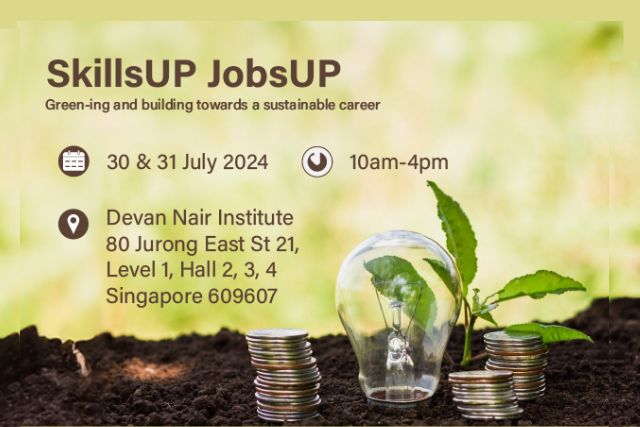
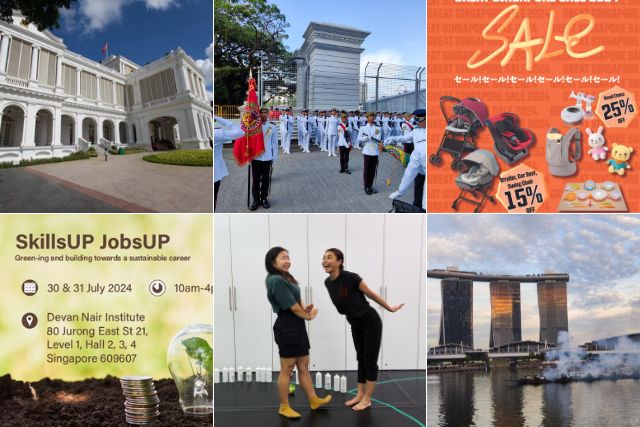






Leave a Comment: